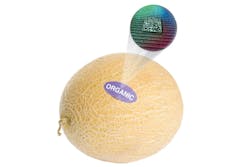It is your birthday. You’re at a fancy restaurant and you have decided to treat yourself to your favorite meal – a filet of Kobe beef, peppercorn sauce and a side of sweet potatoes. Your mouth is watering in anticipation. As you tuck into your meal, you find yourself a little disappointed – the melt-in-your-mouth sensation you have previously experienced is absent. You begin to ponder, how do I know this is really Kobe beef? How indeed.
The authenticity, quality and provenance of the food that we consume has never been more uncertain. Globalization of product supply chains coupled with the meteoric rise of e-retailing has led to reduced supply chain visibility and fostered a trading environment where food counterfeiting, misrepresentation and adulteration are commonplace. From fish to beef, honey to oils, coffee to spices, the range of foods faked across the world is broad and ever-widening.
This article offers some common problems presented in the supply chain and explores the different techniques that can be utilized to determine the authenticity of your food.
The economic impact of food fraud
Food fraud describes the deliberate misrepresentation of foodstuffs with a view to make economic gain. Valued at a staggering $49 billion a year and growing, the counterfeit food and beverage market presents a significant risk to consumer safety. Counterfeits enter the market by many different means. One ploy is to present cheap versions of products as higher quality brands. A second is to introduce cheaper ingredients into authentic products in order to increase profit margins. In both cases the risk to consumer safety is significant.
The scale of the problem is reflected in the 2016 Operation OPSON findings, a joint Europol/Interpol operation that targets the identification of counterfeit and substandard food and drink. The initiative is run on an annual basis and the latest operation, OPSON VI, involved 50,000 checks across 57 countries at shops, markets and various points within the supply chain.
In the operation, 13 million units including 9,800 tons and 2 million liters of potentially harmful foodstuffs were seized. These items had an estimated value of EUR 230 million and included a broad range of products – spices, seafood, water and alcohol. In one seizure, Italian police recovered 85 tons of olives, which had been “painted” with copper sulfate solutions to enhance their color. The staggering results served to underline the prevalence of food fraud across multiple categories and geographic regions.
A worldwide study by Oceana Inc., a global non-profit foundation focused on preserving the oceans and ocean life, found that out of more than 25,000 seafood samples, over 25 percent were mislabeled, and the “seafood fraud” was found in every sector of the seafood supply chain: retail, wholesale, distribution, import/export, packaging/processing and landing.
Fake and dangerous foods pose a significant threat to consumer health and safety. At best, food fraud involves the substitution of a food type with another that is not harmful to humans. At worst, it can involve the inclusion of ingredients that cause allergic reactions, birth defects, hospitalization and in many cases, death.
The problem with food fraud is that it typically goes unreported and undetected.
Consumers are unaware of the issue and it often takes a serious health outcome to bring the problem to light.
Traditional on-package techniques to authenticate food
Traditional approaches to product identification in the food industry focus on the authentication of packaging features. In many instances, this involves the verification of standard human or machine-readable data carriers such as lot numbers and universal product codes.
Other brands may choose to supplement packaging with additional on-package security features such as holograms, watermarks or special inks with the idea being if it is sufficiently hard to reproduce the security feature, the counterfeiter will focus their efforts elsewhere.
Another on-package protection strategy includes the serialization, tracking and tracing of products. This model is predicated on using a product’s origin as a means of preventing counterfeits from entering the supply chain. By assigning unique numbers to each product and introducing authentication at various points, the potential for counterfeit products to get through the supply chain undetected is substantially reduced. No comprehensive traceability standards have been proposed to date but the Food Safety Modernization Act (FSMA) references the requirement for enhanced product tracing abilities going forward.
The difficulty with concentrating on on-package technology is twofold. First, the availability of high-tech, low-cost scanning and production have made it easier for counterfeiters to reproduce standard data carriers and anti-counterfeit technologies.
Secondly, the approach relies on authentication of packaging rather than the product itself. It assumes that if the packaging is genuine, the product is as well. This is often not the case. Those engaged in fraud can swap out good product with bad. This practice has been observed in the infant formula and the wine and spirits industry.
New techniques to tackle adulterated food
In addition to on-packaging strategies for food security, a new range of approaches has become viable.
The first of these is on-product tagging, which focuses on securing the product itself, rather than the packaging. To achieve this, edible microparticles that serve as invisible, secure barcodes are placed or mixed directly in the product, or in the case of fruit, the wax coating that is found on the product. Depending on the technology chosen and application process, these edible barcodes can be authenticated instantaneously in the field by consumers using cell phones or businesses utilizing proprietary readers. Other applications may require forensic analysis. The advantage of the on-product approach is that the security feature will be inseparable from the food item for the duration of its life cycle. In addition, the level of security associated with these technologies, is so high, that food-fraudsters are unable to replicate it.
For example, TruTag Technologies has developed TruTag microtags (known as TruTags) that are microscopic, edible and made of pure silica, a material that is well-studied and is “generally recognized as safe,” or GRAS, by the U.S. Food and Drug Administration. These microtags are covert and can integrate into the very fabric of a food product without required modification of the manufacturing process or the need of new equipment. The microparticles within the microtags carry embedded codes that are variable and can be modified by batch to differentiate product origin all the way down to the manufacturing equipment line on which the units were produced proving it an effective way to combat counterfeiting within the supply chain.
Another technique that is becoming increasingly utilized in food authentication is hyperspectral imaging. Hyperspectral imaging works by collecting and processing information from across the electromagnetic spectrum with the purpose of identifying materials and objects by utilizing highly precise color images that feature more than 400 different colors, as compared to most commercial cameras and displays, which use three colors: red, green and blue. Hyperspectral imaging is not a new technology, but recent advances resulting in the substantial reduction in imaging equipment hardware and image processing costs has meant that this technology can now be considered in commercial applications that were previously uneconomical. One such application is the in-line inspection of foods where a reader can provide reliable, nondestructive and accurate characterization of food-types. The hyperspectral imager can identify anomalies and classify authentic food from fake.
As part of its product identification solution featuring encoded silica microparticles, TruTag Technologies has also developed advanced, high-performance hyperspectral imagers that are handheld and cost-effective. These images can be used on a stand-alone basis for direct imaging of items. This development means that quality checks need not be limited to in-line production. These inspections can now take place at multiple points in the supply chain or even at point of sale, thereby providing a key tool in the fight against food fraud.
From meat to seafood to honey and oils, the global epidemic of food fraud continues to grow at an alarming rate. Along with the growth of the global supply chain comes the challenge of safeguarding our food supply and the need for more advanced fraud detection technologies. With new technology solutions and techniques being developed such as on-product tagging and hyperspectral imaging, food manufacturers now have a chance to safeguard their brand and protect consumers.
Barry McDonogh is senior vice president, Business Development, at TruTag Technologies. McDonogh is responsible for the identification and development of key commercial opportunities and strategic initiatives that expand TruTag Technologies’ products and services into new markets. Prior to his current role, he served as vice president, Business Development and Corporate Strategy at Systech International, a serialization, product safety, anti-counterfeiting and brand protection company, where he led the development of Systech’s global partnership program to scale its operations internationally. Prior to Systech, he served as the Director of Corporate Development at UDG Healthcare plc, an international provider of clinical, commercial, communication and packaging services to the healthcare industry, where he drove the commercial development of United Drug subsidiaries in North America. McDonogh has a Bachelor of Science from University College Dublin and an MBA from University College Dublin’s Smurfit Graduate School of Business.


